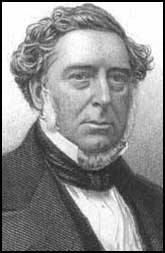


Steam engine inventor black series#
The design incorporated a moist sponge to filter and cool polluted air, and a series of dangling tubes that allowed the wearer to breathe the relatively clean air that exists closer to the ground in a smoky environment. Shifting gears again, Morgan developed an early version of a gas mask, known as a smoke hood. Among his other cosmetic creations were a black hair oil dye and a hair straightening comb. He made the liquid into a cream, patented it in 1913, and launched a hair care products company. While working on one such innovation, a lubricant for sewing machine needles that prevented them from burning fabric while sewing, Morgan accidentally discovered that the liquid could also straighten hair. His earliest inventions were related to a job where he repaired sewing machines: he created both a belt fastener and a zigzag attachment. made wide-ranging contributions to American industry through improvements to existing technology and new inventions. This system used the now-familiar color scheme of green, amber, and red to indicate “clear,” “caution,” and “danger” respectively. In 1906, Dammond went on to patent an additional safety mechanism to signal the conditions on approaching track. This system was patented in 1903, and versions of it were used on the Long Island Rail Road, Pennsylvania Railroad, New York Central Railroad, and New York City Subway. Called the Dammond circuit, the system used an alternating current with a battery backup to provide audio and visual signals within the driver’s cab to indicate an oncoming train. But while he was there, he developed a new, automatic railway signal system to replace the traditional hand-signal system, which was prone to human error. Officially, Dammond was a bridge engineer with MCR. After a string of unrelated jobs, he went to work for the railroad in the early 1900s. Dammond was the first African-American to graduate from the Western University of Pennsylvania (now known as the University of Pittsburgh) in 1893 unfortunately, even with a civil engineering degree, he also found it difficult to secure employment as an engineer. William Hunter Dammond (1873–1956)Īlthough he was born a generation or two after Elijah McCoy in another state, William Hunter Dammond shares a connection to him via the Michigan Central Railroad (MCR). Some claim that he lends his name to the expression “the real McCoy”- but you’ll have to do your own research to decide the truth of that. These and other lubrication enhancements enabled trains (and ships) to run faster for longer, making them more profitable as they spent less time out of commission for maintenance.Īccording to the Michigan Bureau of Labor and Industrial Statistics, by 1899 the McCoy lubricator was in use on almost all North American railroads. He invented both the displacement lubricator and automatic lubricator, the latter of which he patented in 1872. Undaunted, McCoy used his access to the railroad’s machine shop to work on improvements to steam engine equipment.


But when he returned to the United States, the only work he could find was as a fireman and oiler at the Michigan Central Railroad. He apprenticed as a mechanical engineer and, after studying at the University of Edinburgh, earned his mechanical engineering certification. He attended segregated schools as a child before being sent to Scotland at age 15. McCoy’s path to engineering success was not a straightforward one. He primarily invented lubrication systems for steam engines.
Steam engine inventor black free#
Elijah McCoy (1844–1929)īorn free in Canada to African-American parents who had escaped enslavement in Kentucky, Elijah McCoy grew up in America and became one of its most prolific Black inventors and patent holders. Here are just a few who have made advancements in transportation and transit, building systems, CAD programming, communications hardware and software, and office technology. Black Americans-both trained professionals and self-taught inventors-have been contributing to the field of engineering for most if not all of U.S. Some might interpret these statistics to mean that Black Americans are uninterested in science and technology careers, but history shows nothing could be further from the truth. In 2022, Black Americans accounted for 12.6% of the employed population over age 16, but they made up only 6.7% of the workforce in architectural, engineering, and related services and 6.7% in construction. Green Infrastructure & Low Impact Design.Phase I & Phase II Environmental Site Assessments.Comprehensive Economic Development Strategies.Recognizing Black contributions to engineering - WithersRavenel Skip to content


 0 kommentar(er)
0 kommentar(er)
